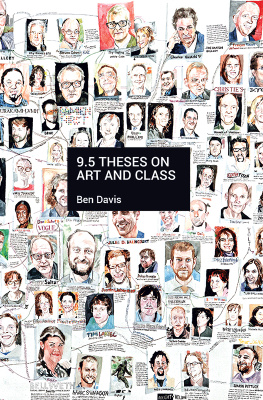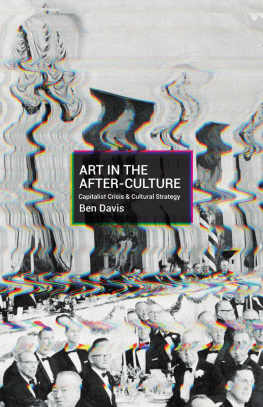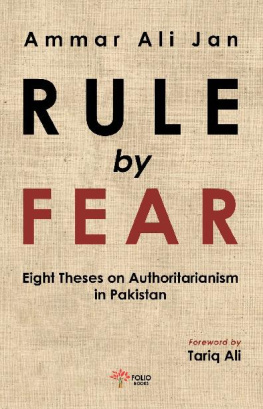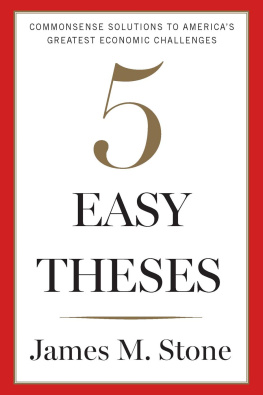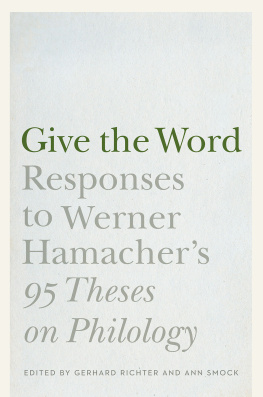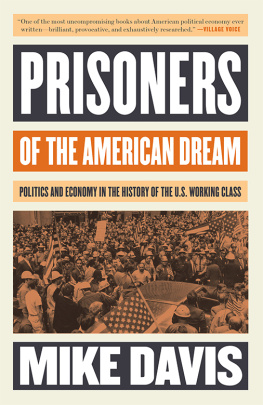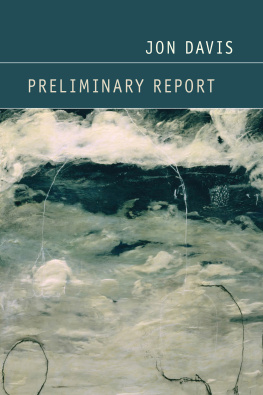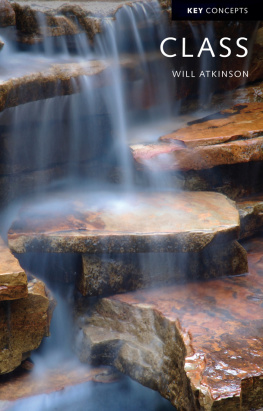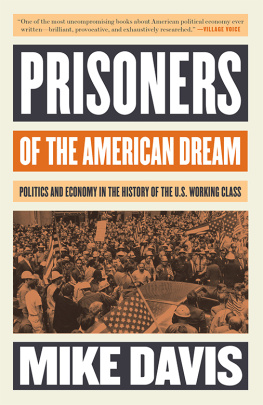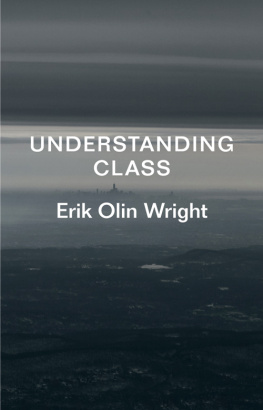Ben Davis - 9.5 Theses on Art and Class
Here you can read online Ben Davis - 9.5 Theses on Art and Class full text of the book (entire story) in english for free. Download pdf and epub, get meaning, cover and reviews about this ebook. year: 2013, publisher: Perseus Books Group;Haymarket Books, genre: Politics. Description of the work, (preface) as well as reviews are available. Best literature library LitArk.com created for fans of good reading and offers a wide selection of genres:
Romance novel
Science fiction
Adventure
Detective
Science
History
Home and family
Prose
Art
Politics
Computer
Non-fiction
Religion
Business
Children
Humor
Choose a favorite category and find really read worthwhile books. Enjoy immersion in the world of imagination, feel the emotions of the characters or learn something new for yourself, make an fascinating discovery.
9.5 Theses on Art and Class: summary, description and annotation
We offer to read an annotation, description, summary or preface (depends on what the author of the book "9.5 Theses on Art and Class" wrote himself). If you haven't found the necessary information about the book — write in the comments, we will try to find it.
9.5 Theses on Art and Class seeks to show how a clear understanding of class makes sense of what is at stake in a broad number of contemporary arts most persistent debates, from definitions of political art to the troubled status of outsider and street art to the question of how we maintain faith in art itself.
Ben Davis currently lives and works in New York City where he is Executive Editor at Artinfo.
Ben Davis: author's other books
Who wrote 9.5 Theses on Art and Class? Find out the surname, the name of the author of the book and a list of all author's works by series.
9.5 Theses on Art and Class — read online for free the complete book (whole text) full work
Below is the text of the book, divided by pages. System saving the place of the last page read, allows you to conveniently read the book "9.5 Theses on Art and Class" online for free, without having to search again every time where you left off. Put a bookmark, and you can go to the page where you finished reading at any time.
Font size:
Interval:
Bookmark:
Introduction
The book you are reading is a collection of essays. Some are entirely new, others substantially reworked versions of pieces I wrote over the last seven or eight years for various art websites, art catalogues, or, in one case, as a pamphlet meant as an intervention into an art show. They respond to a broad array of topics, but also fit together into a carefully curated whole. A few words are in order, then, about the background that has shaped this book.
I moved to New York City in 2004, becoming an art critic full time after stints tutoring criminal justice students and writing about flower shows and poetry slams for a community newspaper in Queens. This was during a period of interesting debates in artabout money, the role of the critic, globalization, and more. The original versions of many of the essays here began as polemics, and they bear the stamp of the time and place they were produced, responding to the concerns that have obsessed the New York art scene during this period (which also explains the somewhat New Yorkcentric focus of the examples).
But another, less evident influence on this book bears mentioning as well. At the same moment that I began to write about art professionally, I also became involved with activism. The years in question were also the years of the massive immigrant rights marches of 2006, dogged antiwar organizing against the wars in Iraq and Afghanistan, the National Equality March and the struggle for same-sex marriage, the successful fight to save Kenneth Foster from the death penalty in Texas and the unsuccessful battle to save Troy Davis from the same fate in Georgia, and the exciting outbreak of the Occupy movement in 2011.
I participated in all these movements and am proud of having done so. Some sense of that experience appears in the following pages, but probably not enough to do justice to how much my involvement in such events influenced my thought. It was the experience of taking part in actual social movementsaggravating, difficult, humbling, inelegant, but ultimately worthwhilethat helped to put the sometimes too self-important claims of art in perspective. As a consequence, I believe that activism has made my art criticism stronger, even where I was not directly writing about politics.
I have a vivid memory of first meeting serious Marxist activists (as opposed to the academic Marxists, post-Marxists, and postmodernists with whom I had studied) and being asked what interested me politically. I explained that I was trying to develop a theory of how Kierkegaards theory of the aesthetic aspect of seduction stood as a critique of the Hegelian master-slave dialectic, through a reading of pick-up tips from Maxim magazine. I can only imagine what a kook they thought I wasbut Im glad they had patience with me.
Terry Eagleton writes about the distinctive combination of pessimism and optimism that characterizes Marxs thoughtMarx is more pessimistic than most about the past, which he sees as a progression of forms of exploitation, but more optimistic about the future, which he sees as possibly much more equal and democratic. This is a fine temperament for an art critic to absorb: I am probably more critical than most about the progressive pretensions of various aesthetic theories and art historys tendency to romanticize the accomplishments of artists. On the other hand, I do not default to a wholesale dismissal of visual art; in fact, I think art has an important role to play in our livespotentially a much more important role indeed.
Experience has shown that mentioning Marxism is liable to provoke all kinds of puzzled reactions and hostile misinterpretations. What does this most abused of philosophies mean to me? This brief introduction is not the place to engage in depth with all the many debates about this subject, some of which are taken up in the course of my essays. However, I will say that the core of Marxs thought seems to me to be his critique of capitalism and complementary focus on the revolutionary power of the working class, combined with a belief that a substantially more equal and just world is desirable and possible. These tenets seem to me to be more relevant today than ever, given that a particularly virulent form of capitalism has pervaded the world on an ever-more-intensive level in the last forty years and is doing a fine job of herding humanity toward a cliff.
I sometimes like to catalogue how many times, within purportedly serious works of art history or theory, I run into offhanded references to how the horrors of the Soviet Union prove that the ideas of Marxism are fundamentally flawed, with this insight inevitably leading to the sad and stupid assertion that all dreams of a substantially better future are futile. Yet there is a robust history of left-wing Marxist critiques of the former Soviet Union, most notably from Leon Trotsky, who believed that Stalins socialism in one country had degenerated into a bureaucratic caricature of the ideals of workers power. Trotsky is hardly an obscure figurehe was in fact one of the leaders of Russias socialist revolution.
Given how widespread the interest in alternative currents of Marxist thought has been in both the academy and the more high-minded art magazinesfrom the Frankfurt School to Situationism to various forms of post-Althusserian philosophyit is telling that the Trotskyist tradition, with its activist emphasis, is so little discussed. This absence is particularly inexcusable given that Trotsky had a great deal to say about artistic matters, in ways that refute many of the persistent stereotypes about the Marxist approach to art.
Explicitly or implicitly, the exploration of how an activist-oriented, progressive Marxist approach clarifies our understanding of artistic questions is the thread that ties together this book. Thus, in chapter 1 I attempt a sustained theorization of how the Marxist idea of class affects the way we think about the labor of visual art. The text is a dilation of my pamphlet 9.5 Theses on Art and Class , which has become one of my most widely read and debated texts despite having never been officially published, and which stands here as chapter 2.
Chapters 3 through 5 take up arts relation to politics. In my opinion, the guidance that Marxism gives on this question is exactly the opposite of the caricature that has Marxist critics reducing art to its value in making a political argument. In fact, I try to show how various mainstream art theories are much more reductive, relying on nebulous idealist abstractions about both art and politics and collapsing both fields together into an unsatisfactory portmanteau.
Chapters 6 through 10 turn to the context within which contemporary art is made and discussed, focusing, as any good Marxist analysis should, on the material structures that shape our ideas. In these essays I attempt to show how transformations in the economy and society at large have affected the institutions of visual art and the ways in which these institutions in turn constrain and determine what art we see and how it is valued.
Chapters 11 through 14 address various debates within art theory. My focus here is on how abstract and apparently intractable theoretical problemsabout arts relation to mass culture, the crisis of criticism, the fate of conceptual art or postmodernismcypher political questions and how a grounding familiarity with serious Marxist thought helps clear them away.
Finally, my two conclusions attempt to turn to the aforementioned optimistic side of Marxist thought. Chapter 15 reflects on how one might engage constructively with the professional art world in the present while escaping its biases. Chapter 16 tries to go beyond a critique of art in the present, to sketch what positive contributions political struggle might have to offer visual art.
For whom, finally, have I written this book? I have two audiences in mind. One consists of artists, writers, and other art lovers. The world of contemporary art may be distinguished, from the outside, by its glamour and sophistication, but those who engage with it up close will find, to their sorrow, that it is unceasingly petty, full of unexamined exploitation and willful social ignorance. Year after year, it chews up and spits out idealistic people, leaving them disgusted and heartsick. And yet I firmly believe that the encounter between idealistic notions about what art can be and the far-from-ideal realities of art in the present can be a profoundly politicizing experience. For those navigating this terrain, I hope that this book is a useful tool.
Font size:
Interval:
Bookmark:
Similar books «9.5 Theses on Art and Class»
Look at similar books to 9.5 Theses on Art and Class. We have selected literature similar in name and meaning in the hope of providing readers with more options to find new, interesting, not yet read works.
Discussion, reviews of the book 9.5 Theses on Art and Class and just readers' own opinions. Leave your comments, write what you think about the work, its meaning or the main characters. Specify what exactly you liked and what you didn't like, and why you think so.

